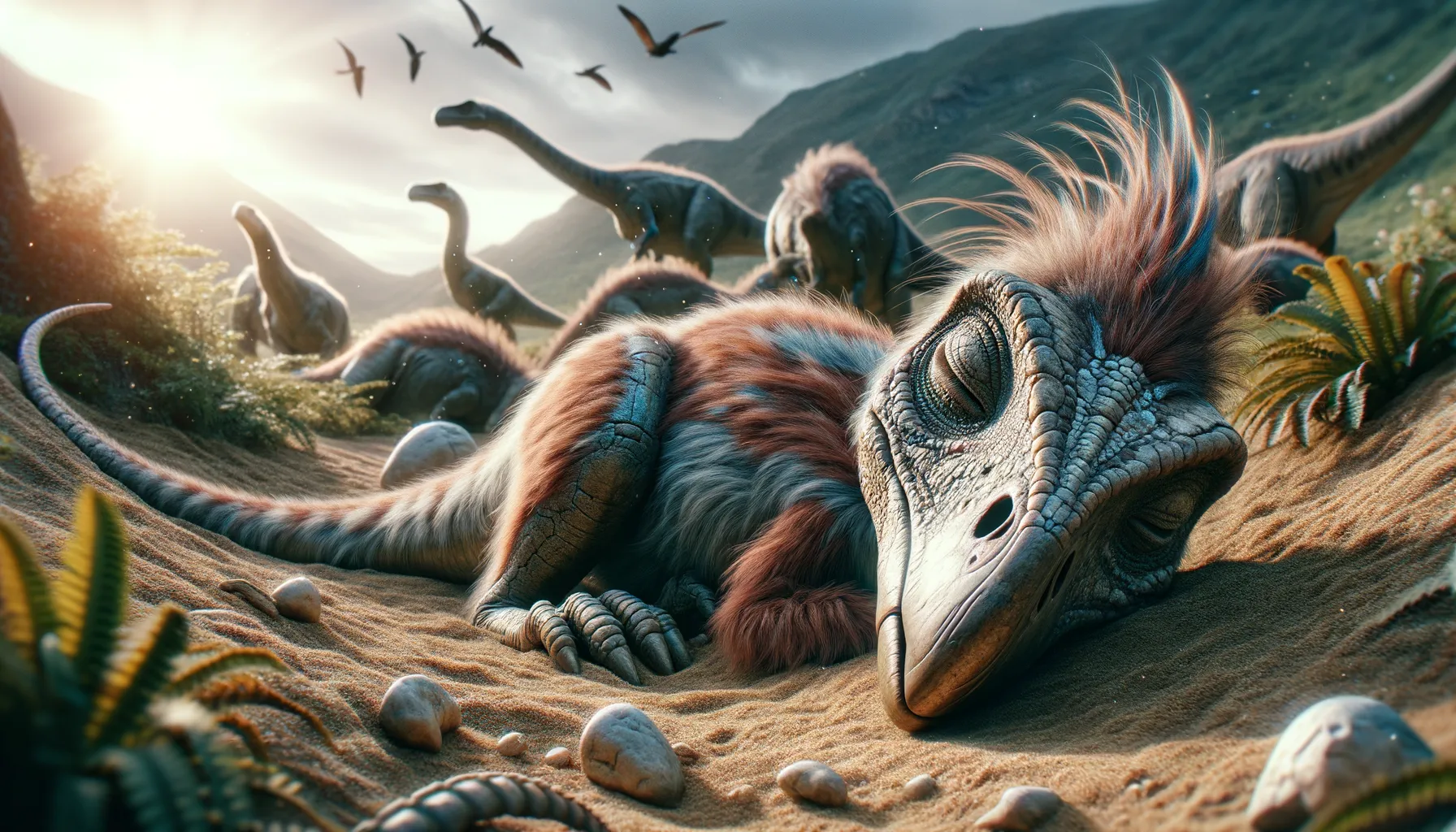
Mei
The sleeping dragon of the Cretaceous.
Period
Cretaceous
Length
It measured approximately 16 inches (40 centimeters) in length.
Height
It stood about 12 inches (30 centimeters) tall.
Weight
It weighed around 2 pounds (1 kilogram).
Mei was a small, bird-like dinosaur from the early Cretaceous period, found in northeastern China. Its name, meaning 'soundly sleeping dragon' in Chinese, reflects the unique sleeping posture in which it was discovered, reminiscent of modern birds. The fossils provide exceptional insight into the behavior and lifestyle of small theropods. This dinosaur's fossilized remains were uncovered well-preserved, capturing it in a resting position with its head tucked under its arm.
Diet
Mei was likely a carnivore, feeding on insects and small animals. Its sharp teeth and agile body made it well-suited to catching fast-moving prey.
Hunting
Mei might have hunted by pouncing on its prey, using its agility and quick reflexes to capture small, fast-moving creatures. It likely relied on surprise and speed to catch insects and other small animals.
Environmental challenges
During Mei's time, the environment was changing, with new species appearing and disappearing. It had to compete with other small predators for food resources, which could be scarce. Climatic shifts might have impacted its habitat, altering the availability of shelter and prey. Additionally, Mei needed to protect itself from larger predators while navigating the challenges of its changing ecosystem.
Speed
Mei was likely a swift and agile mover.
Lifespan
Its lifespan is not precisely known, but similar small theropods could live up to 10-15 years.
First discovery
Mei was first discovered in China in 2004.
Fun Facts
- The name 'Mei' means 'soundly sleeping' in Chinese, reflecting the curled-up sleeping position in which the fossil was found.
- Mei is a tiny dinosaur, only about the size of a modern-day chicken, making it one of the smallest non-avian dinosaurs discovered.
- It was discovered in Liaoning Province, China, which is famous for its well-preserved dinosaur fossils.
- Mei belongs to the troodontid group, known for having bird-like features such as feathers and a wishbone.
- The fossil of Mei is so well preserved that it provides significant insights into the sleeping patterns of dinosaurs.
- Mei lived during the Early Cretaceous period, approximately 125 million years ago.
- Mei's discovery site is part of the Yixian Formation, a location rich with ancient life forms from the Age of Dinosaurs.
Growth and Development
Mei would have hatched from eggs and gone through rapid growth to reach maturity. Like other theropods, it likely had a high metabolic rate to support its active lifestyle. Young Mei would have been vulnerable to predation, requiring them to quickly learn survival skills. As they grew, they would have developed the physical characteristics necessary for hunting and evading predators.
Habitat
Mei lived in an environment that included forested areas and open plains. Its habitat would have provided cover and resources, like insects and small vertebrates, that it needed to thrive. The presence of trees would benefit Mei, offering both shelter and hunting opportunities. Seasonal changes in its habitat could affect food availability and impact its survival strategies.
Interaction with other species
Mei likely coexisted with a variety of other dinosaurs and prehistoric animals. It might have competed with other small theropods for food. While it targeted small prey, it had to remain vigilant for larger predators that could pose a threat. Its interactions could also include avoiding conflicts and finding niches where it could live without direct competition.
Natural lifespan
Mei's natural lifespan probably ranged around a decade.
Reproduction
Mei reproduced by laying eggs, likely in a nest on the ground. It is uncertain whether Mei showed parental care, but nest protection would have been critical. Clutch sizes could range from a few to several eggs, aiding species survival. Hatchlings needed to fend for themselves quickly due to their vulnerable size.
Social behaviour
The behavior of Mei remains under study, but it possibly exhibited solitary habits akin to other small theropods. While little evidence points to complex social behavior, they might have lived in loose groups or pairs at certain times. Mei's bird-like characteristics could suggest some social interaction, particularly for mating or territory defense.
Fossil locations
Mei fossils were discovered in northeast China, specifically in Liaoning Province. The region is renowned for its well-preserved Early Cretaceous fossils. The exquisite preservation of Mei's specimens offers remarkable insights into its life and environment. Such fossil locations are crucial for understanding the biodiversity and ecological dynamics of the era.
